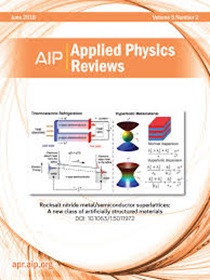鉴定用光学成像物理不可克隆功能的评定指南
IF 11.6
1区 物理与天体物理
Q1 PHYSICS, APPLIED
引用次数: 0
摘要
物理不可克隆函数(puf)是一种物理安全原语,在身份验证(如防伪技术)中具有重要应用。通过测量与它们相关的特征,它们可以用来生成与其结构相关联的独特身份。光读puf (o - puf)是利用光学成像技术来创建这些身份数据库的一个子集。他们提供了一个有希望的解决方案,通过提供一个强大的身份验证解决方案,假冒的永久挑战。所选择的评估指标在不同的领域是不同的;在用于评估的优点数字以及用于评估puf的特定子集的协议和标准方面缺乏共识。这项工作回顾了迄今为止评价技术发展的进展,并强调了o - puf统计评估方面的重要差异。本文总结了过去十年文献中最流行的度量标准,并对核心度量标准进行了分离和数学定义。然后将它们提炼成评估和比较不同技术的最佳实践建议。提出了一个开源包,提供了一个完整的测试套件,以标准化该领域的测试。最后,本文还提出了评价o - puf性能随时间变化的新方法。统一的评估方法对于推进防伪技术至关重要,特别是在这些系统现在正用于商业应用的情况下。本文章由计算机程序翻译,如有差异,请以英文原文为准。
A guide for assessing optically imaged physically unclonable functions for authentication
Physically unclonable functions (PUFs) are a physical security primitive with important applications in authentication, such as in anti-counterfeiting technologies. They can be used to generate unique identities, linked to their structure, by measuring features associated with them. Optically read PUFs (O-PUFs) are a subset that utilizes optical imaging techniques to create these database of identities. They offer a promising solution to the perpetual challenge of counterfeiting by providing a robust authentication solution. The metrics chosen for evaluation are varied across the field; there is a lack of consensus in the figures of merit used for evaluation, as well as the protocols and standards used for assessing this specific subset of PUFs. This work reviews the progress in the development of evaluation techniques to date, and it highlights important differences in the statistical assessment of O-PUFs. A summary of the most popular metrics used in the literature in the past decade is presented, and the core metrics are isolated and mathematically defined. These are then distilled into recommendations of best practice for assessing and comparing different technologies. An open-source package, providing a full testing suite, is presented to standardize testing in this field. Finally, novel methods for evaluating the performance of O-PUFs over time are also proposed. A unified approach to assessment is essential for advancing anti-counterfeiting technologies, especially as these systems are now being used in commercial applications.
求助全文
通过发布文献求助,成功后即可免费获取论文全文。
去求助
来源期刊

Applied physics reviews
PHYSICS, APPLIED-
CiteScore
22.50
自引率
2.00%
发文量
113
审稿时长
2 months
期刊介绍:
Applied Physics Reviews (APR) is a journal featuring articles on critical topics in experimental or theoretical research in applied physics and applications of physics to other scientific and engineering branches. The publication includes two main types of articles:
Original Research: These articles report on high-quality, novel research studies that are of significant interest to the applied physics community.
Reviews: Review articles in APR can either be authoritative and comprehensive assessments of established areas of applied physics or short, timely reviews of recent advances in established fields or emerging areas of applied physics.
 求助内容:
求助内容: 应助结果提醒方式:
应助结果提醒方式:


